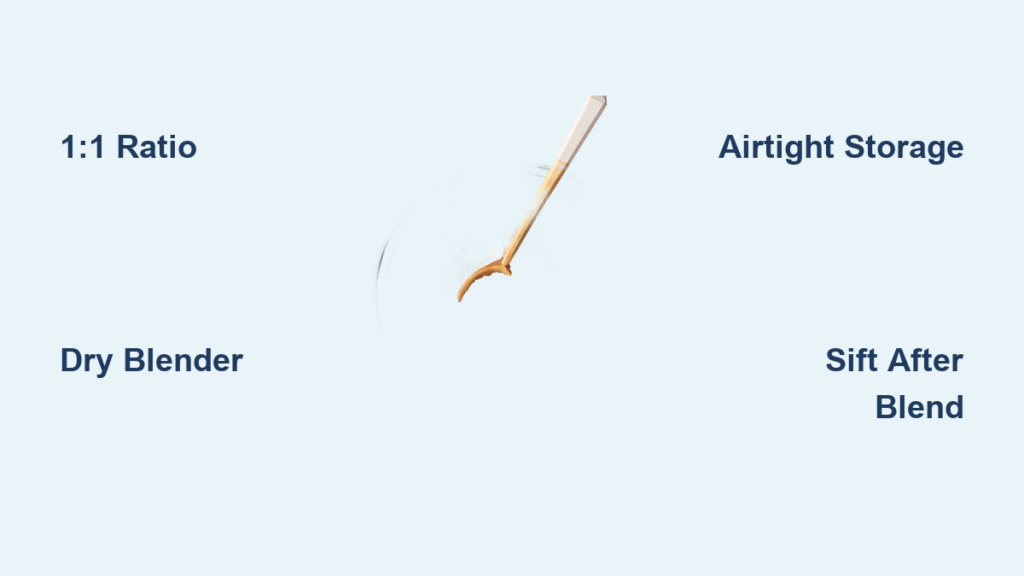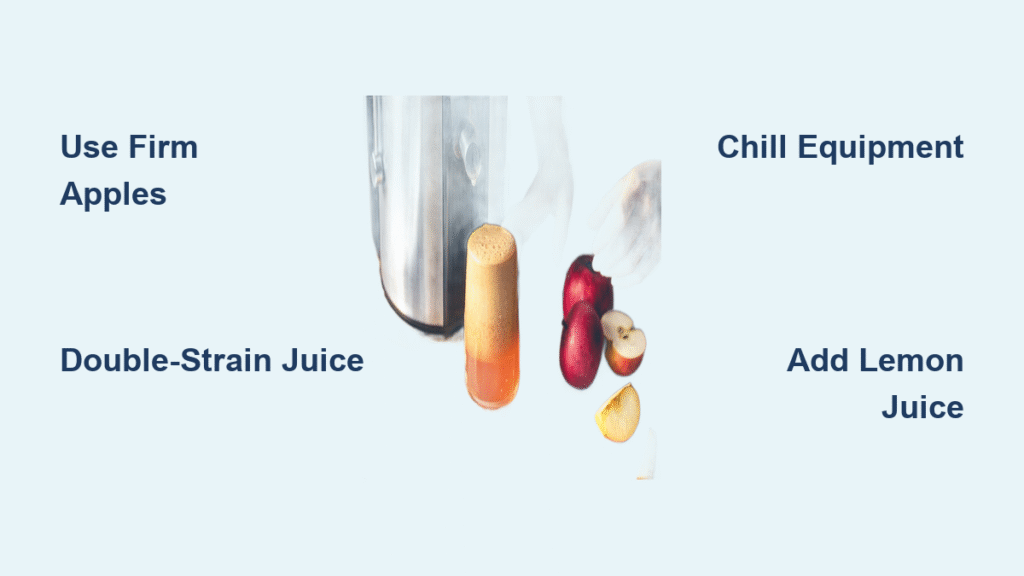You’re elbow-deep in baking when you realize your powdered sugar container is empty. That last-minute frosting emergency doesn’t require a grocery run or store-bought bags with mysterious additives. Making powdered sugar in blender is shockingly simple—transforming basic granulated sugar into silky confectioners’ sugar using only your countertop appliance and one pantry staple. This kitchen hack solves the midnight baking crisis while giving you fresher, purer results than commercial versions.
The magic lies in understanding that powdered sugar is just finely milled granulated sugar with cornstarch to prevent clumping. When you skip the store aisle and make it yourself, you control the ingredients and avoid anti-caking agents like tricalcium phosphate. Whether you’re frosting cupcakes for a birthday or dusting beignets for brunch, making powdered sugar in blender takes mere minutes and costs pennies per batch.
Essential Equipment and Ingredient Ratios for Success

Best Blender Types for Perfect Powdering
Your blender’s power directly impacts texture quality. High-speed models like Vitamix or Blendtec pulverize sugar into cloud-like powder in under 60 seconds. Food processors work well for larger batches but may leave slight grittiness. For single-serve needs, coffee grinders or NutriBullets excel—just process in quarter-cup increments. Crucially, every appliance must be bone-dry before starting. Even microscopic moisture from yesterday’s smoothie will cause immediate clumping, ruining your entire batch.
The Non-Negotiable Cornstarch Ratio
The 1:1 ratio is your powdered sugar foundation: 1 tablespoon cornstarch per 1 cup granulated sugar. This precise proportion prevents caking during storage. Bakers needing scientific accuracy should use 3% cornstarch by weight (0.3 ounces per 10 ounces sugar). Deviating causes problems—too little cornstarch invites clumps, while excess creates chalky textures in frostings. This ratio yields approximately 2 cups powdered sugar per 1 cup granulated, making batch scaling effortless.
Step-by-Step Blender Method for Flawless Powder
Measure and Combine Before Blending
Add measured sugar and cornstarch directly to your dry blender jar—never pre-mix in a bowl where static causes loss. For standard frosting needs, start with 1 cup sugar plus 1 tablespoon cornstarch. Pulse once to distribute cornstarch evenly before continuous blending. This prevents uneven anti-caking protection that leads to storage failures.
Optimal Blending Technique and Timing
Begin on low speed for 15 seconds to avoid sugar dust explosions, then ramp to high. Blend for 30-60 seconds total, stopping halfway to scrape sides with a silicone spatula. Test texture by pinching between fingers—it should feel completely smooth, not gritty. Under-blended sugar ruins delicate frostings, while over-blending generates heat that melts crystals. Weak blenders need 10-second pulse intervals with 30-second cooling breaks to prevent motor strain.
Critical Storage Immediately After Blending
Transfer powder immediately to an airtight glass jar—plastic containers absorb odors. Press plastic wrap directly onto the sugar surface before sealing to block humidity. Properly stored with cornstarch, your homemade powdered sugar stays clump-free for 1-2 years. Without cornstarch? Use within hours or it solidifies into unusable bricks. Never refrigerate—it introduces condensation during temperature changes.
Sugar Variations and Their Real-World Results

White Sugar Options Compared
Plain white sugar creates the brightest, fluffiest results ideal for vanilla buttercream. Raw cane sugar works perfectly but yields a subtle beige tint that’s invisible in chocolate frosting. Turbinado delivers excellent texture with a light caramel note—perfect for snickerdoodles. Avoid “natural” sugars with molasses coatings like muscovado; their moisture content guarantees clumping.
Alternative Sweeteners That Actually Work
Coconut sugar grinds smoothly into light brown powder with mineral-rich depth—ideal for gingerbread cookies. Brown sugar makes tan-colored confectioners’ sugar with pronounced molasses flavor, transforming standard buttercream into salted caramel frosting. Sucanat works but retains its dark color and coarse texture unless over-blended (which generates heat). Brown sugar will never produce white frosting—embrace its caramel beauty in chocolate applications instead.
Troubleshooting Common Powdered Sugar Problems
:max_bytes(150000):strip_icc()/__opt__aboutcom__coeus__resources__content_migration__serious_eats__seriouseats.com__images__2016__03__20160301-powdered-sugar-showdown-vicky-wasik-1-831db5b6dd744bd19654d3cd181772f6.jpg)
Fixing Gritty Texture Instantly
If your sugar feels sandy between fingers, continue blending in 30-second bursts. For stubborn grit, sift the powder through a fine-mesh sieve and re-blend the coarse remnants. Weak blenders often need multiple passes—never add liquid to “help” the process as it creates rock-hard clumps. Pro tip: Chill your blender jar for 10 minutes before starting; cold temperatures keep sugar crystals brittle for finer grinding.
Solving Lumpy Storage Issues
Small clumps in stored sugar mean moisture infiltration—sift them out before use. Large wet clumps indicate failed storage; discard the batch. Prevent future lumps by adding silica gel packets to your container (food-safe versions only). If lumps form during blending, your cornstarch ratio was too low—add ¼ teaspoon more per cup and pulse briefly to incorporate.
Managing Unexpected Color Results
When brown sugar creates caramel-toned powder, don’t panic—it’s working as intended. For lighter beige, blend equal parts white and brown sugar. Dark results excel in chocolate applications but avoid them for white cakes. If pure white is essential, stick to plain granulated sugar and verify your blender is residue-free (coffee oils cause yellowing).
Batch Size Guidelines for Smart Baking
Small Batch Formula (Single Recipe)
1 cup granulated sugar + 1 tbsp cornstarch = 2 cups powdered sugar. Perfect for:
– Frosting one 9-inch layer cake
– Dusting 12 beignets
– Making 24 snowball cookies
Large Batch Strategy (Holiday Prep)
Scale using the 1:1 ratio (e.g., 4 cups sugar + 4 tbsp cornstarch). Store in dated pint jars for instant access during busy baking seasons. Make triple batches—powdered sugar disappears faster than you think when you have fresh supply. Label jars “Powdered Sugar – [Date]” with permanent marker; plastic lids can transfer odors over time.
Expert Tips for Professional Results
Blender Optimization Secrets
Run your blender empty for 30 seconds before adding sugar to clear static electricity. For coffee grinders, freeze sugar for 15 minutes first—cold crystals shatter more finely. After blending, wipe the jar with a microfiber cloth (not paper towels that shed fibers). Never use the same blender for sugar and spices unless thoroughly washed—vanilla flavors linger for weeks.
Quality Control You Can’t Skip
Test texture by rubbing between thumb and forefinger—it must feel like talcum powder. Compare color to store-bought in daylight; natural sugars will be slightly off-white. Taste a pinch: properly made powder dissolves instantly with no graininess. If it sticks to your tongue, blend 15 seconds longer. Always sift before royal icing—it’s non-negotiable for smooth piping.
Time-Saving Shortcuts Worth Stealing
Pre-measure cornstarch into mini mason jars labeled “For 1 Cup Sugar.” Store them beside your sugar canister for grab-and-go blending. Keep a dedicated coffee grinder solely for sugar—no washing between uses. When making frosting, add powdered sugar directly to the mixing bowl to avoid transfer waste. Freeze leftover powder for up to two years in vacuum-sealed bags.
Creative Uses Beyond Basic Frosting
Baking Performance Boosters
Add 2 tablespoons to brownie batter for fudgier texture that stays chewy for days. Roll shortbread cookies in powdered sugar immediately after baking—the heat creates a glossy glaze. For perfect pie glazes, whisk 1 cup powder with 2 tbsp milk until smooth—no more lumpy sauces. In cake batter, replace 25% of granulated sugar with powdered for finer crumb structure.
Dessert Finishing Mastery
Dust warm churros through a tea strainer for even coating. Mix with cocoa powder (3:1 ratio) for chocolate-dusted profiteroles. Create edible glitter by blending sugar with freeze-dried fruit powder. For elegant presentations, use stencils to dust powdered sugar over lemon tarts—homemade powder stays pristine longer than store-bought.
Making powdered sugar in blender transforms baking emergencies into triumphs with pantry staples and 60 seconds of effort. Remember the sacred 1:1 cornstarch ratio, store in airtight glass, and embrace natural sugars’ unique colors. Your next frosting crisis just became your secret weapon—no grocery runs needed. Keep this method handy for when inspiration strikes at midnight; with your blender as a sugar mill, you’ll never face empty confectioners’ sugar containers again.





